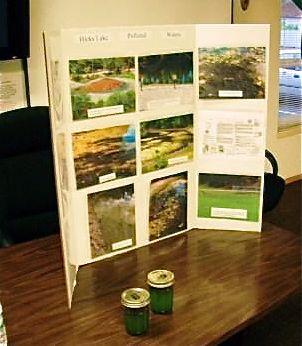Brownfields help for White Center? County, feds, locals talk

Story and photos by Jonathan Stumpf
Reporting for White Center Now
Members of the North Highline Unincorporated Area Council met Thursday night with officials from the Environmental Protection Agency (EPA) and King County, along with Dick Thurnau from Friends of Hicks Lake and Emery Bailey from Environmental Coalition of South Seattle (ECOSS) to discuss and identify blighted properties within White Center and other North Highline neighborhoods that could benefit from King County’s Brownfields program.
This community grant program provides the technical assistance that is needed before the cleanup of a contaminated property takes place and helps property owners understand how to prepare for the cleanup and redevelopment.
The Brownfields program provides mostly nonprofits and municipalities technical assistance in assessment of these properties, but with their ECOSS partnership, King County can extend the program to private individuals and businesses.
Lucy Auster of the King County Solid Waste Division and Joanne LaBaw of the EPA explained to the group how the grant works: first, a property is identified as potentially contaminated like the site of a former dry cleaners or gas stations. The Phase I assessment consists of a site visit, interviews, history review, and looking at old maps and aerial photos. The Phase II assessment, if needed, involves environmental sampling and lab analysis. The phases can cost anywhere from $5,000-7,000 and $20,000-60,000 respectively.
Auster said this is a three-year grant with $400,000 available and they are looking to target the White Center area. Bailey added because White Center was historically an arterial route to Seattle, there are a lot of former gas stations sites perfect for this grant.

Thurnau and other council members were curious if the Brownfields program could be used for the toxicity problems at the four-acre Hicks Lake in Lakewood Park. Auster thought because it was a green space owned by King County, that could make it problematic. She suggested that it might have to go to the state.
“I’ve been to Olympia on this thing before,” said Thurnau. “No one is in charge. That is the whole point.”
Auster said she’ll do some more research. “I’ll educate us and figure out the opportunities,” she said. “This sounds like a priority.”
Bailey presented to the group a report identifying 76 properties in the White Center area that he suggested would be a good starting point. “We don’t have a great big bag of goodies,” said Bailey, “but we do have some nice tools to help with getting traction.”
Other talk surrounded the arsenic in the planter boxes at Steve Cox Memorial Park, to which Bailey — a former geologist with Asarco — explained that it depended on the type and level of contamination.
Additionally, it was explained that this grant is not used for the actual cleanup or for the assessment of ongoing behaviors.
On July 1 at the monthly NHUAC meeting, Auster, LaBaw, and Bailey will be back to present the program and answer any questions from the full council and general public. (As always, that meeting will be at 7 pm at North Highline Fire District HQ.)
You can follow any responses to this entry through the RSS 2.0 feed. Both comments and pings are currently closed.
